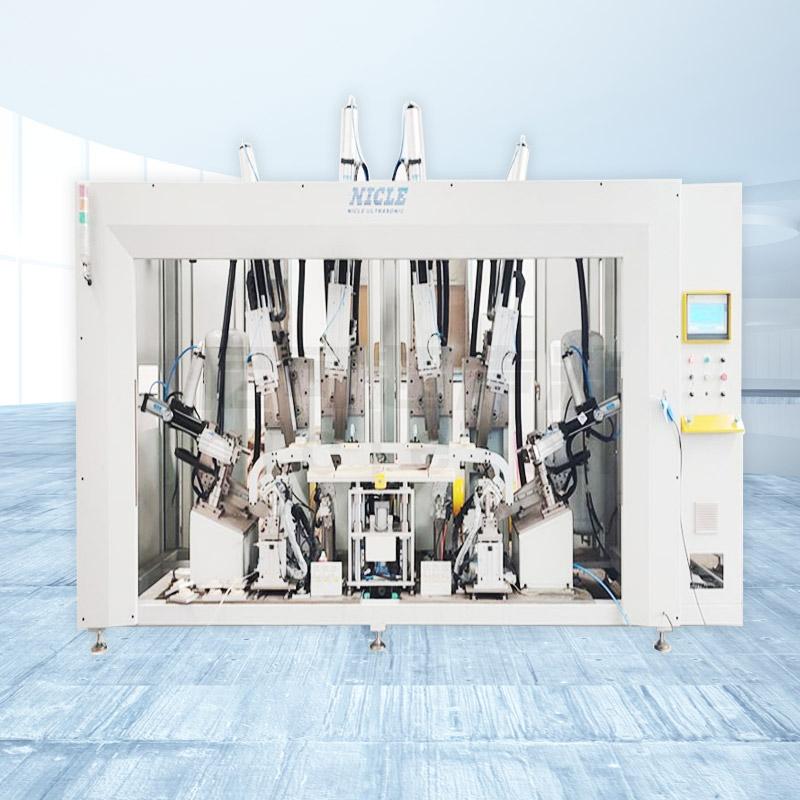Cost Analysis: Is Ultrasonic Welding of Polycarbonate Materials Worth the Investment?

Choosing the right joining method for thermoplastics like polycarbonate (PC) isn’t just about performance — cost is often the deciding factor. Ultrasonic welding has emerged as a popular choice, but how does it really stack up against traditional methods like solvent bonding, mechanical fastening or adhesive joining?
This article breaks down the long-term financial impact of adopting ultrasonic plastic welding technology for PC parts and compares it to other techniques from a cost-benefit standpoint.
Initial Investment and Setup Costs
Ultrasonic welding systems involve a higher upfront investment. You’ll need:
-
A power supply (generator)
-
A converter and booster
-
A horn (custom designed per application)
-
Precision jigs or fixtures
For a single setup, capital expenditure can range from AUD 20,000 to 60,000 depending on system complexity and automation level. In comparison:
-
Adhesive bonding: minimal tooling, but ongoing costs for consumables
-
Mechanical fastening: low setup, but requires additional materials and assembly steps
-
Solvent bonding: basic tooling, but includes solvent storage, handling and ventilation
While ultrasonic welding systems carry higher initial costs, they are designed for speed and repeatability. Over time, these features reduce labour and rework expenses.
Operating Costs
Here’s where ultrasonic plastic welding starts to shine. Once installed, it’s cost-effective to run:
-
Welds are completed in less than two seconds
-
No consumables like screws, adhesives or solvents
-
Minimal energy consumption compared to heat-based joining
-
Lower labour costs due to automation potential
By contrast:
-
Adhesives involve curing time, surface prep and precise application
-
Fasteners increase part count and assembly complexity
-
Solvent bonding demands controlled environments and skilled handling
Table: Typical Cost per 1,000 Units (AUD)
| Method | Material/Consumables | Labour | Rework/Rejects | Total |
|---|---|---|---|---|
| Ultrasonic welding | Negligible | Low | Very Low | Low |
| Adhesive bonding | Moderate | High | Medium | High |
| Mechanical fastening | Low | Moderate | High | High |
| Solvent bonding | Low | High | Medium | Medium |
Speed and Throughput
Speed is a key cost factor in any production line. Ultrasonic welding typically delivers cycle times under two seconds. With minimal fixturing and no cure time, it suits high-volume manufacturing perfectly.
Compared to:
-
Adhesives: up to 30 minutes per unit including prep and curing
-
Fasteners: 5–10 minutes per unit depending on design
-
Solvents: 10–20 minutes including setup, clamp time and drying
Faster cycles equal more output with fewer staff — and time saved equals money saved.
Maintenance and Downtime
Ultrasonic welders are robust, but do require:
-
Regular cleaning of horns
-
Occasional recalibration
-
Replacements for wear parts (horns and boosters)
Still, they outperform adhesive equipment (which can clog), and are more reliable than mechanical assembly lines with high moving part counts. Solvent setups need frequent checks for ventilation and safety compliance.
Less downtime also means fewer interruptions in production schedules — a hidden but real financial advantage.
Quality, Waste and Rework
Poor welds mean scrapped parts. Ultrasonic welding provides:
-
Consistent, repeatable joints
-
Integrated quality monitoring
-
No surface contamination
-
Better aesthetics
It also eliminates user error tied to mixing adhesives, applying too much force on screws, or inconsistent drying times for solvents. That translates to fewer rejects, less waste and lower material costs over time.
In comparison, rework rates for adhesive or solvent processes are often higher due to variation in temperature, humidity and operator skill.
Long-Term ROI
Let’s consider a mid-size plastics manufacturer producing 500,000 PC components annually.
-
Traditional bonding (adhesive or mechanical): Estimated AUD 0.20–0.40 per joint in labour and materials
-
Ultrasonic welding: Estimated AUD 0.04–0.07 per joint post-installation
Over one year:
-
Traditional: AUD 100,000–200,000 in joining costs
-
Ultrasonic: AUD 20,000–35,000 in operating costs
Subtracting capital investment, the breakeven point typically falls within 12–18 months. Beyond that, savings are compounded annually.
Environmental and Compliance Savings
Adhesives and solvents often require:
-
Hazardous materials handling
-
Ventilation systems
-
Chemical storage and disposal
-
Safety training and PPE
Ultrasonic welding avoids these entirely. No fumes, no toxins, no storage issues. This can significantly reduce your compliance overhead and liability risks.
When Ultrasonic Welding Might Not Be Worth It
There are cases where it’s not ideal:
-
Very low-volume production runs
-
Extremely large or irregular parts
-
Applications where mechanical serviceability (e.g., opening or disassembly) is required
In these instances, traditional methods may still make financial sense despite their limitations.

- Business
- Research
- Energy
- Art
- Causes
- Tech
- Crafts
- crypto
- Dance
- Drinks
- Film
- Fitness
- Food
- Spellen
- Gardening
- Health
- Home
- Literature
- Music
- Networking
- Other
- Party
- Religion
- Shopping
- Sports
- Theater
- Wellness


